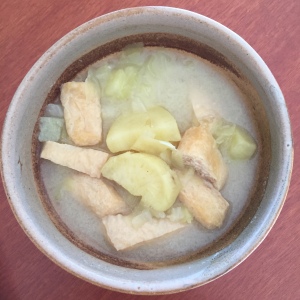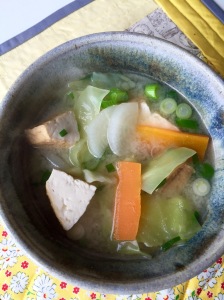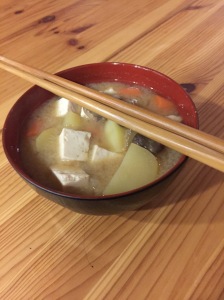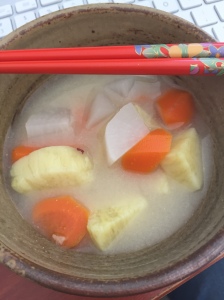明けましておめでとうございます。
On this first day of 2016 I started the day with a bowl of ozoni. Ozoni is the soup that is eaten during the New Year’s holiday in Japan. I first learned to make it when I spent New Year’s at my in-laws’ house in Togo, Fukui. Each area of Japan has its own style of ozoni, but one general rule is that those living in the Kanto area have a dashi broth, and those in the Kansai area have a miso broth. Ozoni differs even from town to town, and household to household. This morning both my daughter and I are carrying on the tradition of the Aoyama family.
Our ozoni might be called binbokusai, or a poor man’s soup. It does not have much in it—no vegetables or meat. It is very simple, and perhaps the reason is that my in-laws own a rice shop and they prepare a lot of mochi each year. It’s delicious. And I can’t imagine ozoni any other way at this point.
Today’s miso soup: Even though it IS a soup with miso, it is still called ozoni. I used a light miso and first boiled water with an ample piece of kombu. I dropped a couple of pieces of mochi (note that we eat round mochi in Kansai, not the square mochi of Kanto) and simmered it until the mochi was soft enough to eat. Miso is added and that’s it! When it is served, we sprinkle katsuoboshi or bonito flakes over it. And that’s the first meal of the day.










